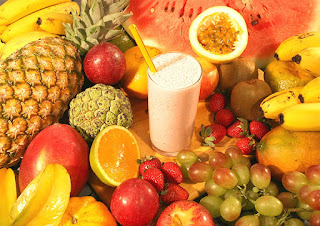9 healthy and dietary exercise tips
 |
food near me |
1. Eat more fruits and vegetables.
Fruits and vegetables are good for our health and often have little effect on the environment. There are some exceptions, as some require a lot of resources to move and update, so eating less frequently can make your diet more durable. Examples include:
Thin fruits or vegetables or require cooling (lettuce and berries)
Vegetables grown in protected conditions (such as hot tomatoes or cucumbers)
Foods that use many resources during transportation (green beans, itch or berries imported from the Southern Hemisphere).
2. Eat locally during the season
Locally cooked foods can be a permanent choice if you choose it for the season you live in. Production or storage of local foods after the natural growth season may be more than shipping to local food stores.
3.Required. Avoid eating too much, especially treats.
Consuming just what you need can reduce your demand for food supplies by reducing overproduction. It also helps you to maintain your health and lose weight. Restricting snacking as an energy to draw attention to less eating nutrients and portion sizes is a helpful way to avoid unnecessary overdoses.
4.the plant. Protein exchange for plant animals
In general, more resources are needed to produce animal protein (especially beef) from vegetable proteins (beans, legumes, and some grains). Eating a vegetarian diet also provides health benefits: Vegetarian foods provide more fiber and less saturated fat, which can reduce the risk of heart and heart disease.
For non-vegetarians, limiting meat consumption 1-2 times a week, having a non-vegetarian day, and choosing more permanent meats like beef like chicken can help reduce your environmental footprint.
For those who choose a vegetarian / vegan diet, combining different sources of vegetable protein will ensure your protein needs are met.
5. Select whole grains
Unrefined cereals are generally less resource than refined products because they require fewer processing steps. It is also beneficial to health and reduces the risk of heart disease, type 2 diabetes and weight gain.
Cooking great foods and pasta made with whole grains, unlimited barley, buckwheat and quinoa are great options.
Brown rice is a good alternative to white rice, but it must be enjoyed with plenty of water during production.
6. Choose sour, permanent seafood
Fish is a good source of healthy omega-3 acids that contribute to overall vision, brain function and heart health. However, the stock of wild fish is declining due to overfishing. To take advantage of essential nutrients and reduce stress in wild fish stocks:
Fish and shellfish are consumed 1-2 times a week to provide essential nutrients and reduce stress in wild fish stocks.
Select specific fish and seafood with sustainability posters from recognized organizations such as the Marine Oversight Board.
7. Eat less dairy products
Despite the environmental impact of milk and dairy products, dairy products are an important source of protein, calcium, and essential amino acids, and are associated with the risk of many chronic diseases, such as metabolic syndrome, high blood pressure, stroke, and bowel cancer. . And type 2 diabetes.
Enjoy low-fat dairy products every day.
Sometimes high-fat cheese is cut.
For those of you who choose to get rid of dairy products altogether, choose a strong vegan drink that contains vitamins and minerals like calcium.
8. Avoid unnecessary packaging
Food packaging, especially when it is made from recycled materials, can have a major impact on the environment. We can reduce the percentage of all prepackaged products purchased (I think the pasting wrap covers against loose apples) or choose materials made from biodegradable, fully reusable, or reusable materials.
9. Drink tap water
Water quality and safety standards are highest in Europe. Instead of buying bottled water, we can refill the water bottle as much as we want. Tap water costs a fraction of the cost of bottled water and reduces our environmental footprint.
More information:
For more information on the environmental impact of our diet, see “The Permanent Diet”.
Leave a Reply